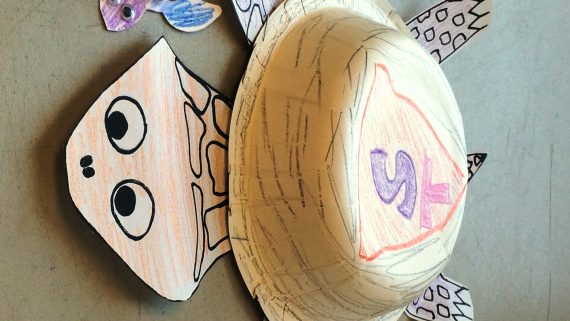You’re Getting Warmer!
This week we are hearing from Kristin, currently our Assistant Outreach Instructor, who worked as a Field Biologist with the NC Wildlife Resources Commission’s Sea Turtle Project on Bogue Banks.
Between 2002 and 2007, the island of Bogue Banks, NC was used as a research site for the NC Wildlife Resources Commission’s Sea Turtle Project. The researchers studied the effects of beach nourishment on sea turtle reproduction by observing sand temperatures and compaction (the hardness and density of the sediment) at sea turtle nests. Beach nourishment is the replacement of sand onto beaches to lessen the effects of erosion.
Every day, sand washes away with the tide or blows away with wind, causing beaches to narrow over time. This can be a big problem for oceanfront businesses and homes. It can also be a problem for nesting sea turtles that rely on wide beaches to safely lay their nests. If a beach is too narrow, nests are in danger of being submerged under water or washing away when the tide is high. Sea turtle eggs are most successful when they can remain dry for the majority of their incubation time. So, beach nourishment can be quite beneficial to sea turtles.
When a beach is nourished, usually large boats with special equipment suck the sediment from the bottom of an inlet. That sediment is then pumped onto a beach. This process is called dredging. The sediment is often different than the sand on the beach. It is darker and smaller in particle size. Sometimes it looks like silt, clay, or mud instead of sand.
This clumped texture of the new sand can be very hard to dig into, even for a sea turtle. The sea turtle mother may dig a nest that ends up being too shallow to provide the best safety for her eggs, leaving it unsafe to erosion. The ideal sea turtle nest depth is 1 ½ to 2 feet deep.
In a nest, eggs that are laid first will be at the bottom of the nest and the last eggs to be laid will rest at to the top closer to the sun. Eggs near the surface will incubate at warmer temperatures than those that are in the bottom of the nest. Darker colored sediment absorbs and holds more heat from the sun than lighter sediment. This can cause the sea turtle eggs to reach temperatures too hot for successful hatching. Did you know that eggs incubated at temperatures warmer than approximately 84.5oF develop into female sea turtles? Those incubated at cooler temperatures develop into male turtles. Dark sediment causing higher nest temperatures could also impact the larger population of sea turtles.
Overall, the research project on Bogue Banks determined there was no significant impact to the nesting success on that island or to hatching success. Sand compaction did not have a significant impact either, though there were nests that appeared to be more shallow than expected. There were nests that were especially difficult to excavate. The research did find sand temperatures and nest temperatures were higher in areas where the beach had been nourished. How could beach nourishment help oceanfront houses and nesting sea turtles? How may it hurt nesting sea turtles? For more details about the Bogue Banks Sea Turtle Project research, visit the Carteret County Shore Protection Office website.
If you’d like to connect this topic into your classroom, check out our Boys and Girls lesson plan on temperature and sea turtle hatchlings! Speaking of hatchlings, ours are still growing! This week Turtle A is 893 grams and 18.2 cm long. Turtle B is 997 grams and 18.9 cm long. For more information on what to do with those numbers, please check out our lesson: Hatchling to Yearling.














